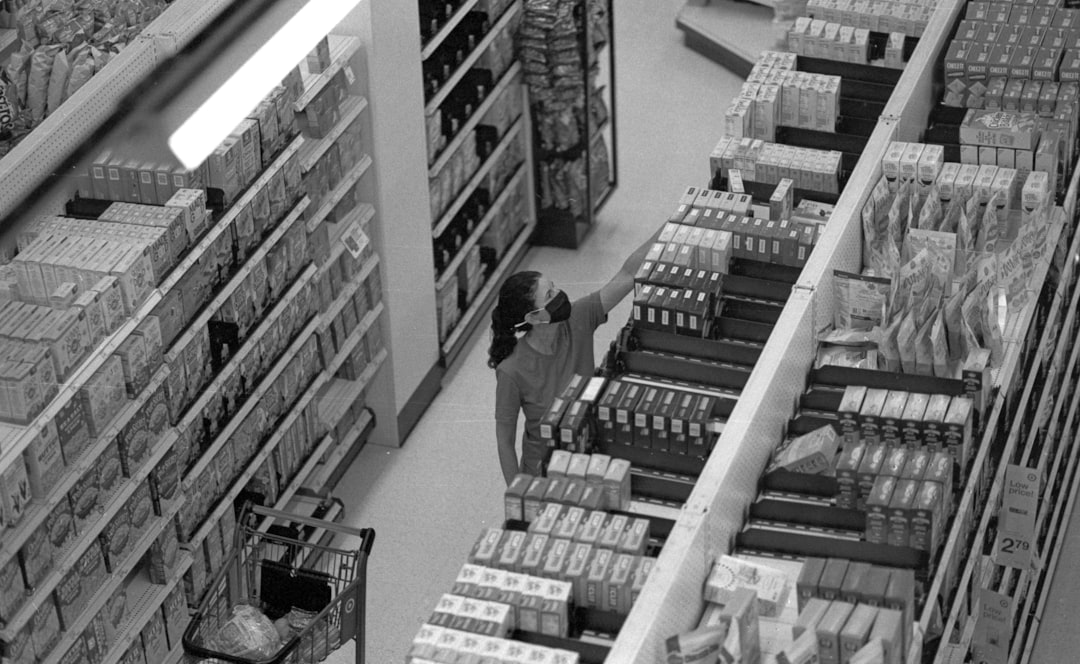

Engage prospects with a scan and streamline customer engagement with FREE QR code marketing tools by Sona – no strings attached!
Create a Free QR CodeFree consultation

No commitment

Engage prospects with a scan and streamline customer engagement with FREE QR code marketing tools by Sona – no strings attached!
Create a Free QR CodeFree consultation

No commitment
Catalog retailers have long leveraged the power of physical mailers to inspire discovery and drive sales, but today’s customers expect more than static paper pages. As shoppers increasingly straddle offline and online shopping experiences, there is a critical gap between the tactile impact of print and the convenience of digital engagement. Retailers frequently encounter the frustration of missing high-value prospects who explore retail catalogs but never complete an order or visit an online store. Without a clear way to capture or track these engagements, significant opportunities are simply lost.
QR codes have emerged as a practical technology for transforming print catalogs into interactive gateways, enabling catalog retailers to identify and nurture previously anonymous interest. With QR integrations, shoppers move from page to action, accessing product content or digital offers. Retailers gain much-needed insights into how their catalog drives meaningful engagement and where spend is truly paying off.
This guide explores how catalog retailers can address common challenges such as lack of visibility into print-driven web activity and inconsistent campaign measurement by weaving QR codes into their strategies. Discover proven approaches for using QR codes to boost conversions, surface high-fit leads, unlock actionable analytics, and evolve the customer journey across channels.

Catalog merchandising excels at sparking desire, but traditional paths from catalog to purchase are often slow and opaque. Mail-in forms, generic phone numbers, and printed URLs create friction. They also mask buyer intent because you cannot tell which page, product, or offer motivated action. QR codes eliminate that disconnect. One scan converts curiosity into measurable engagement and directs shoppers to the next best step.
To maximize conversion lift, treat your catalog like a launchpad for tailored digital journeys. Replace analog bottlenecks with scan-to-action pathways that match the reader’s moment of interest. Layer tracking on top to understand who scanned, what they scanned, and what they did next. Then optimize content and placements with real-world feedback rather than guesswork.
This approach enables catalog retailers to convert more interest into measurable outcomes. It also reveals fresh growth channels from print-originated interactions, creating a reliable pipeline of digital behaviors you can retarget and nurture via offline attribution.

Catalog retailers operate at the intersection of tactile discovery and digital convenience. The catalog inspires exploration, but without a direct, trackable bridge to online action, intent dissipates. What follows is a data gap that undermines budget allocation and campaign optimization. QR codes provide a low-friction mechanism to capture that intent and guide shoppers to richer experiences and faster checkouts.
Beyond convenience, QR codes deliver operational agility. Dynamic destinations let marketers correct course after mailing, redirecting scans to in-stock variants, updated promotions, or localized pages. That flexibility prevents missed revenue due to static print content and turns every scan into a learning moment for the next campaign.
QR integration gives catalog retailers a full picture of how print influences the customer journey. It elevates catalogs from static inspiration to an always-on engine for digital engagement and measurable revenue.

A QR code is a gateway, and what lies on the other side should match intent. Catalog retailers succeed when each code is tied to a clear use case, destination, and tracking plan. Deploying generic codes without segmentation dilutes signals and limits your ability to tailor follow-up. The right mix of formats aligns seamlessly with catalog content and customer expectations.
Prioritize formats that streamline shopping and deepen product understanding while removing barriers to purchase. Combine these with dynamic control and analytics to keep your print assets fresh and your measurement accurate.
These formats help retailers transform catalogs into interactive experiences that meet customers where they are. With a platform like Sona QR, you can generate, manage, and track every format in one place.

Growth hides in the gaps between attention and action. In a catalog, those gaps surface where shoppers linger but have no immediate way to continue the journey. By placing QR codes at precise decision points, you turn curiosity into conversion paths while collecting the data needed to refine your next edition.
Start by examining how readers physically interact with your catalog. Which spreads attract the most questions for your support team? Which SKUs are chronically low in online visibility despite being hero items in print? Add QR codes where they will most meaningfully compress the time from browse to buy.
Mapping QR deployment to these high-prospect zones converts invisible interest into actionable signals. Over time, this leads to smarter merchandising, better offer alignment, and a measurable uptick in conversion.
Targeted QR implementations solve the precise moments where catalog shoppers hesitate. The strongest use cases reduce friction, add clarity, and create pathways to conversion that feel natural and timely. Each should be tied to a specific metric so you can quantify lift and iterate.
Use cases should also reflect how your audience prefers to shop. Some readers turn to mobile for fit and styling guidance. Others want to skip to checkout with preselected variants. Design your QR experiences accordingly and test them in controlled mailings before rolling out widely.
Every scan communicates interest in a specific category, price tier, or promotion. When you deploy multiple codes with clear destinations and tags, you can segment your audience automatically and follow up with relevant messaging from this retargeting playbook. This approach transforms anonymous readers into known segments that sales and marketing can act on immediately.
Effective segmentation starts with intent. A scan from the outerwear spread indicates different needs than a scan from clearance pages. The more context you capture at the moment of scan, the better your personalization will be. Use dynamic parameters and UTM structures to pass scan source, catalog version, and page number into your analytics and CRM.
With this setup, catalog retailers can quickly identify high-fit leads and retarget based on real behavior. The result is sharper messaging, higher relevancy, and improved conversion rates across channels.
QR codes become exponentially more valuable when they connect every offline impression to a consistent digital journey. In catalog retail, that means linking print, packaging, store signage, email, and social into a unified experience that recognizes the customer and advances them toward purchase.
Plan your cross-channel architecture before the catalog drops. Determine which scans go to public landing pages, which require personalization, and how post-scan actions will trigger follow-up. With orchestration in place, each scan becomes a reliable driver of downstream engagement and a clean signal for attribution.
QR codes serve as the offline onramp to your digital marketing engine and unlock a new layer of data across channels that were once difficult to measure. With a centralized platform like Sona QR, you can manage codes, monitor performance, and sync scan data with your CRM and ad platforms.
Launching QR campaigns in a catalog environment demands clarity of purpose, design discipline, and rigorous measurement. Teams often underperform not because the idea is flawed, but because codes are untracked, CTAs are vague, or landing pages are mismatched to intent. A strong checklist keeps execution tight and results repeatable.
Use the following steps to guide your planning from concept to optimization. Treat each step as a quality gate. If the goal is not specific, the code type is not trackable, or the destination is not mobile-first, pause and fix before printing.
Clear, tracked QR codes transform catalog engagement from guesswork to actionable insights. Over successive mailings, your scan data becomes a powerful guide for creative, merchandising, and media decisions.

Attribution is the Achilles heel of catalog marketing. You send a beautiful book into the world and hope for lift, but without precise connections between catalog interactions and online outcomes, you are forced to rely on blended KPIs. QR instrumentation closes this loop, tying page-level interest to digital behavior and revenue impact.
Robust analytics do more than count scans. They contextualize them by source, location, device, and outcome. When these signals feed into your CRM and attribution stack, you can quantify return on print spend, spot underperforming segments, and reallocate budget to what is working.
With Sona QR for code management and Sona.com for attribution, catalog retailers can confidently measure their print’s digital footprint. You can finally connect scans to revenue and make QR a core element of your performance marketing strategy.
Scaling QR effectiveness is about consistency, education, and automation. Many teams deploy a handful of codes and call it a day. The retailers who win systematize how codes are created, placed, messaged, and measured, then use the resulting data to refine both print and digital.
Start with repeatable standards, then experiment around the edges. Test creative treatments, incentives, and code placements. Bring your call center and store associates into the loop, so they can nudge hesitant customers toward scanning and help close the loop on multi-channel paths.
These practices help you extract more value from every catalog and every scan. Combined with disciplined analytics, they turn QR from a novelty into a dependable growth lever.
For catalog retailers, every untracked touchpoint and missed engagement signal represents lost opportunity in an omnichannel world. QR codes transform catalogs into interactive gateways that capture intent, accelerate purchases, and illuminate the path from page to revenue. They give marketers the flexibility to adapt after print, the data to prove impact, and the tools to orchestrate journeys across channels.
Catalog retailers sit at a pivotal crossroads where tactile discovery meets real-time personalization. By integrating QR codes strategically, you can re-engage anonymous interest, attribute offline actions to digital outcomes, and build lifecycle programs that nurture shoppers into loyal customers. With thoughtful execution and the right technology, every page becomes a springboard to measurable results.
Sona QR helps you generate, brand, and manage dynamic codes at scale, while Sona.com connects scans to identities, journeys, and revenue. Get started by launching your first QR-enhanced catalog spread and tracking the lift. Start creating QR codes for free. Then expand to inserts, packaging, and in-store signage. With each iteration, your catalog becomes smarter, your marketing more cohesive, and your conversions stronger.
QR codes have revolutionized the catalog retail industry by transforming traditional print catalogs into interactive, measurable sales drivers. They enable catalog retailers to seamlessly bridge offline browsing with online purchasing, enhancing customer acquisition and delivering personalized shopping experiences that boost conversions. Imagine knowing exactly which catalog pages spark the most interest and turning that insight into targeted campaigns that drive real revenue growth.
With Sona QR, catalog retailers can create dynamic, trackable QR codes in seconds, update promotions instantly without costly reprints, and connect every scan directly to sales performance metrics. This means no missed opportunities—just smarter campaigns that adapt and grow with your customers’ needs. Start for free with Sona QR today and turn your catalog into a powerful conversion engine that drives engagement and sales with every scan.
QR codes transform print catalogs into interactive gateways by enabling shoppers to instantly access product content, digital offers, and tailored online journeys, reducing friction and speeding up purchase decisions.
Incorporating QR codes allows retailers to capture shopper intent, track engagement in real time, update content dynamically, reduce missed revenue, and gain actionable insights to optimize campaigns and improve ROI.
By adding QR codes to packaging, hangtags, and post-purchase inserts, retailers can link customers to care guides, loyalty program enrollments, and personalized offers that encourage repeat purchases and strengthen customer relationships.
QR codes can link to product detail pages, pre-filled shopping carts, interactive lookbooks, style guides, mobile forms for notifications or consultations, app downloads, and dynamic destinations that update over time.
Leading brands strategically place QR codes next to high-value products and time-sensitive offers, use dynamic codes for flexibility, track scan data for insights, align QR campaigns with business goals, and integrate codes across multi-channel marketing efforts.
Use Sona QR's trackable codes to improve customer acquisition and engagement today.
Create Your FREE Trackable QR Code in SecondsJoin results-focused teams combining Sona Platform automation with advanced Google Ads strategies to scale lead generation

Connect your existing CRM

Free Account Enrichment

No setup fees
No commitment required

Free consultation

Get a custom Google Ads roadmap for your business






Launch campaigns that generate qualified leads in 30 days or less.
